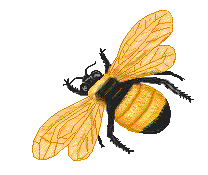The Maya calendar may seem less complicated if one considers our own Gregorian calendar system first. If a date was given as Thanksgiving Day, Thursday, November 23, 1997 in the Age of Aquarius, and during President Clinton's Presidency we would for the most part understand what was meant even though we might not know where the words "Thursday" and "November" came from. It may also help to recall that weekdays go through a cycle that has nothing to do with astronomy or the position of the sun and earth and that 1997 really means 1 period of 1000 years, plus 9 periods of 100 years, plus 9 periods of 10 years plus 7 periods of 1 year.
The Maya thought that the world was created and destroyed 3 times and we are in the latest creation. To get an "absolute" date one uses:
THE LONG COUNT
(The first day begins on August 13th in the year 3114 BC)
In writing a date for an event the date is the Initial Series Introductory Glyph1 Bak'tun=20 K'atun=144,000 days
1 K'atun=20 Tun=7,200 days
1 Tun=18 Winal=360 days
1 Winal=20 K'in=20days
1 K'in=1 day
Monday, January 1, 1996 was 1,865,799 days after the starting date or 12 bak'tun, 19 k'atun, 2 tun, 13 winal, and 19 k'in
This can be written as 12.19.2.13.19DISTANCE NUMBER GLYPHS are the number of days to be counted forward or back from the cumbersome initial dedicatory date which required 10 glyphs. This was shorter to represent.
Period ending dates were a later method of recording a 7200 year period name or a particular k'atun.
The CALENDAR ROUND is the 52 year cycle when there is a repeat of the 260 day Tzolk'n almanac and the 365 day haab or vague year (a real year is about 1/4 of a day longer).
A calendar round date names the same day in two different calendars - the Tzolk'n and the Haab.
The great cycle is 13 bak'tuns or 5,128 years when the world will supposedly end (?) on December 21, or the 23rd, 2012. They probably didn't believe this according to Linda Schele.
Astronomical dates are related to the 365 day Mayan year or HAAB also sometimes called a "Vague Year." It was composed of 18 twenty-day "months" and one 5-day "month." The Maya it should be recalled worked with a vigesimal number system (base 20 not base 10 like ours).
The Tzol k'in was a recurring 20 day cycle (like our 7 day week) and a 13 day cycle that work together like two wheels. The whole cycle repeats every 260 days (a gestation period?)
The last day of the month was represented as the "seating" glyph for the next upcoming month. The Tzol k'in dates were almanac dates and were used for divination, omens, etc. (Similarly in our culture "Monday's child is fair of face", etc.).There was also the Night Gods 9 day cycle. Here 9 different gods changed in a repeating cycle.
There was also a Lunar Series that would describe the state of the moon's phase on a given date (i.e. how many days had elapsed since the last moon). This told where in the lunar cycle the date was located.
Other cycles were also indicated as referencing a date.
There is free computer software available and several interesting websites on the Internet regarding the Maya calendar. Robert J. Sharer's book The Ancient Maya 5th Edition 1994 SDtanford University Press, Stanford also has a good section on this subject.
Topics 
- Mesoamerican writing systems
- Mesoamerican governments
- Mesoamerican religions
- The Maya Calendar System
- Reconstructing Maya and Zapotec political organization
- How the Sky Works
- Definitions
- References Cited
- Home
Copyrighted photograph taken by Clive Ruggles
Articles © 1997 Kevin L. Callahan
Email: call0031@tc.umn.edu